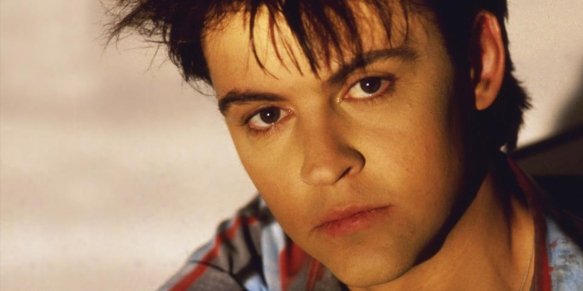Between late 1979 and the end of 1989, there were nearly 500 (real) one-hit wonders of the 80s that reached the BILLBOARD Hot 100 just one time, a list that includes Soft Cell, Gary Numan, Timbuk 3, The Church, Bronski Beat, Nik Kershaw, The Buggles, The Waitresses, Ultravox and two different bands named The Silencers. Once a week or so, I’ll highlight a (real) one-hit wonder for you.

In a way, it’s kind of funny to go back and think about all of the “controversial” songs from the 80s, many of which wouldn’t be anywhere in the same vicinity as controversial today. For example, George Michael’s “I Want Your Sex” (a song written as a response to the AIDS epidemic and exploring monogamy), was so “controversial” in 1987, that one of the local Central Maine radio stations, the Top 40 station called 92 MOOSE (I’m not kidding, that’s their name), reworked their own censored version, where the word “sex” was replaced by the word “moose.” JFC. And Casey Kasem didn’t even mention the title on AMERICAN TOP 40 until well into the song’s chart run (it peaked at No. 2). Now you have songs on the radio with the word “FUCK” in the title, and it’s a big hit (albeit edited for radio, but still).
But not all (then) “controversial songs” like “I Want Your Sex” or Frankie Goes To Hollywood’s “Relax” (famously banned by the BBC) go on to become big hits. “Sexcrime (Nineteen Eighty-Four)” by Eurythmics (from the film they scored, based on George Orwell’s 1984) is an incredible song with an amazing beat, was the 15th biggest Dance song of 1985 on BILLBOARD’s Dance chart, and a Top 10 hit all over the world. But, since it had the word “SEX” in it, American radio wouldn’t play it, and it stopped at No. 81 on the BILLBOARD Hot 100, despite the word “sexcrime” being used in George Orwell’s book, which, too, has been banned over the years.
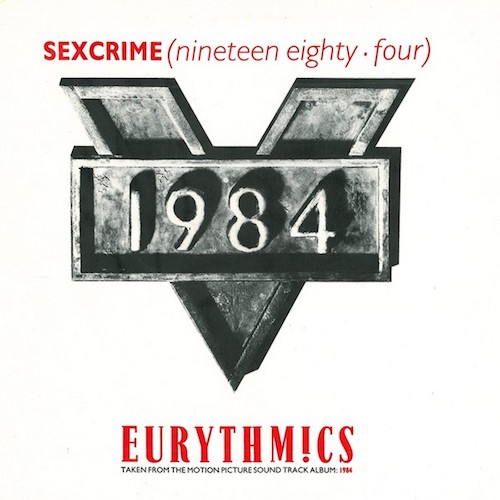
In 1984, radio wasn’t even ready for songs about interracial couples, despite the fact that one of the biggest TV shows on at the time, THE JEFFERSONS, had an interracial married couple on the show. But, it’s true — I can name at least two songs from 1984 that struggled on the BILLBOARD Hot 100 because of that very subject matter.
The first song that comes to mind is the brilliant “Original Sin” by INXS, from their album, THE SWING. In a 1986 interview, Michael Hutchence had said “Original Sin” was about “kids and conditioning. Growing up. How you grow up through other people’s ideas or your own.”
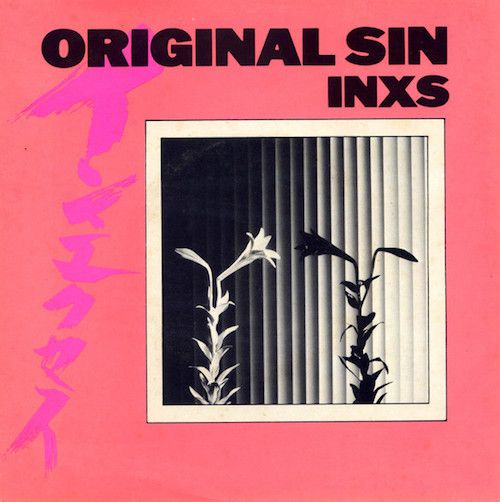
Nile Rodgers, who produced “Original Sin,” had the idea to lean the lyrics in a more interracial direction: “The original lyrics were ‘Dream on white boy, dream on white girl.’ I said, ‘Why not make it ‘black boy white girl’?’ I come from an interracial couple. Psychologically that makes it a bigger statement.”
But, despite killer producing by Nile Rodgers, and backing vocal help from Daryl Hall, some radio stations weren’t too jazzed about the lyrics (and maybe even the title) and “Original Sin” stopped at No. 58 on the BILLBOARD Hot 100.
Another “controversial” song which had a similar attempt (and result) that year was “Black Stations / White Stations” by M+M (Martha And The Muffins).
The band from Toronto, Canada started out as a six-member New Wave / Art Rock / Dance-Pop band in 1977, but by the time their fifth album, 1984’s MYSTERY WALK, was released, they were down to just two members — lead singer, guitarist and keyboardist Martha Johnson and band founder, keyboardist and guitarist Mark Gane. So, they whittled Martha And The Muffins down to M+M (as a play on their first names).
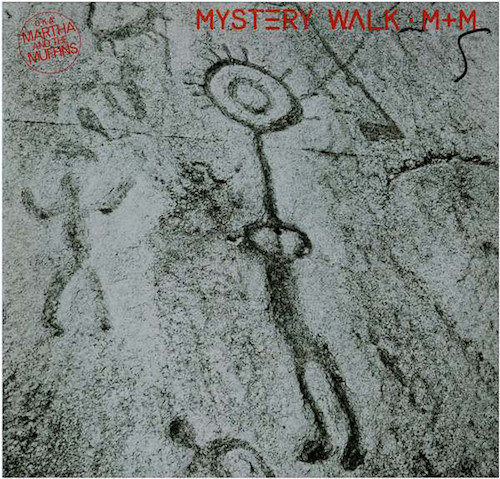
Getting producing help again from the brilliant Daniel Lanois, who had co-produced their earlier albums THIS IS THE ICE AGE (from 1981) and DANSEPARC (from 1983), “Black Stations / White Stations” took a step away from New Wave and a step closer to Dance and Funk.
“Black Stations / White Stations” is based on a true story about radio stations and racism. Martha Johnson knew about a radio station that refused to play a song about an interracial relationship (“Original Sin,” perhaps?), and it prompted her and Mark Gane to write the song, with lyrics calling radio stations out to “Stand Up and Face The Music / This Is 1984.” And, being involved with radio for most of the past 35 years, I’ve learned that radio stations don’t like to be pissed on, especially in song, even if they know their policies are wrong, and even if the song itself is a protest song against racism.
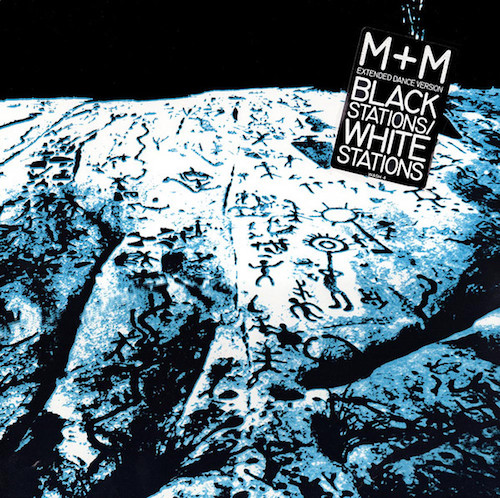
The Canadian 12″ single cover art for “Black Stations / White Stations.”
So, suffice it to say, as awesome and funky and kickass as “Black Stations / White Stations” is, radio stations did not dig the title or the lyrics, and it was not well-received on the singles charts. A couple of Canadian singles charts, The RPM Top 100 and the Toronto radio station CHUM, did chart the single at Nos. 26 and 11, respectively, but the on official Canadian singles chart, THE RECORD, it didn’t even chart in the Top 40.
On the BILLBOARD Hot 100, “Black Stations / White Stations” debuted at the end of June 1984 at No. 82, had one big week a couple of weeks later in mid-July, and the following week, climbed to its peak of No. 63 (with a bullet), before falling out of the Hot 100 four weeks later. It was the only time M+M or Martha And The Muffins would grace the Hot 100.
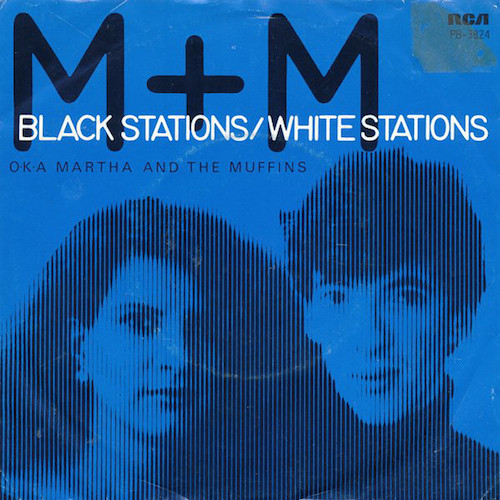
The Netherlands 7″ single cover art for “Black Stations / White Stations.”
Over in the U.K., “Black Stations / White Stations” fared a little better, reaching No. 46, but the song found its biggest audience in the American dance clubs, and it reached No. 2 on the BILLBOARD Dance chart.
Today (1.20.2020) is Martin Luther King, Jr. Day here in the United States, and there’s an amazing quote about racism he said that I wanted to share in this post:
“I refuse to accept the view that mankind is so tragically bound to the starless midnight of racism and war that the bright daybreak of peace and brotherhood can never become a reality… I believe that unarmed truth and unconditional love will have the final word.”
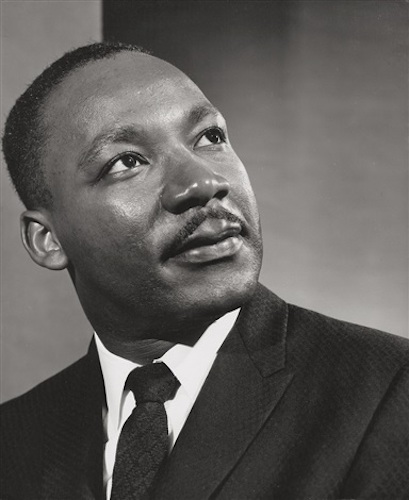
The Rev. Dr. Martin Luther King, Jr.
It’s so unfortunate that radio and TV back in the 80s was so limiting as to what folks could sing or say to get their message out (even about racism). I remember it being a big deal when Alan Alda said “son of a bitch” on the last episode of M*A*S*H in 1983 — “OMG a swear on TV!” Today, however, songs about monogamous sex (or sex in general), the term “son of a bitch,” or talk of interracial couples won’t even raise an eyebrow. In some respects, I love how far we’ve come in terms of what’s allowed and embraced on radio and TV (network TV is even forking catching up), but I still really wish radio had embraced songs like “Sexcrime” and “Original Sin” and “Black Stations / White Stations” back in 1984…
“A voice inside of my car told me today / there was a song of a love they would not play / She was black, he was white / A voice inside of my car told me today… Black stations, white stations / Break down the door / Stand up and face the music / This is nineteen eighty-four!”
https://www.youtube.com/watch?v=os4eWX88OxA
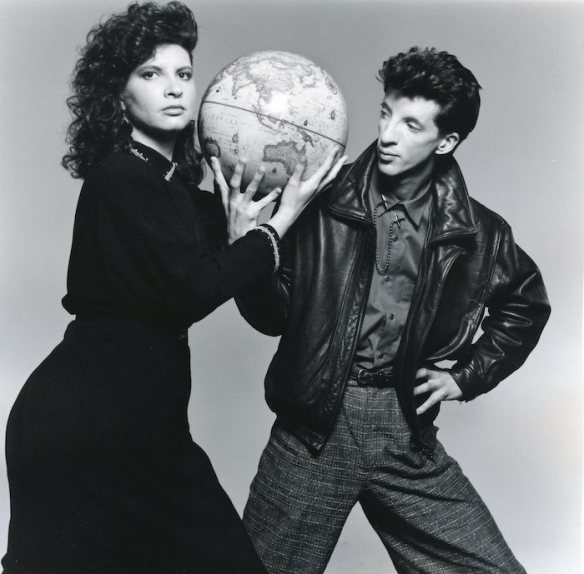
M+M: Martha Johnson and Mark Gane.

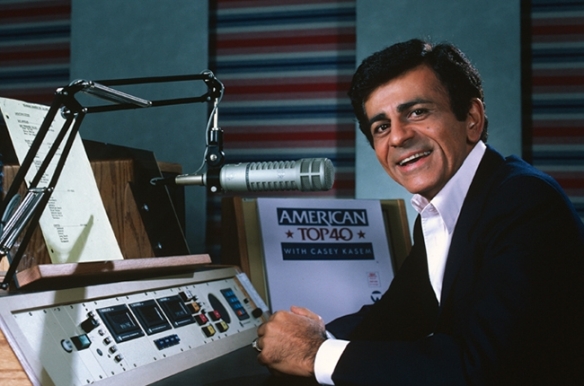
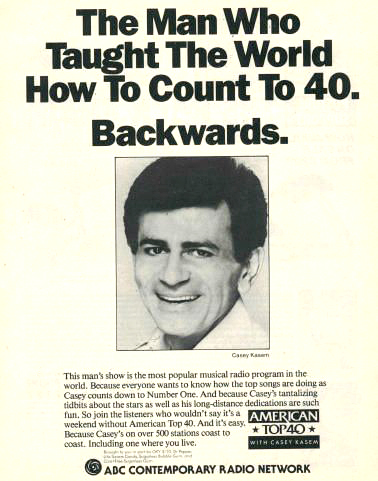






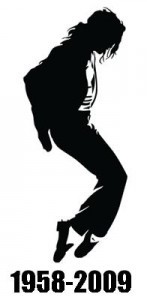
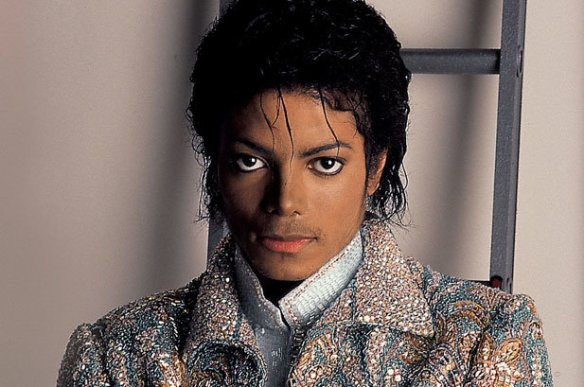
 I’ve prolly said on the bloggy thing here that the New Wave era here in America started and ended with The Human League.
I’ve prolly said on the bloggy thing here that the New Wave era here in America started and ended with The Human League.
 On the BILLBOARD Hot 100 dated July 16th, 1983, British music acts shattered the record established in 1965, where 14 songs by British recording artists were in the American Top 40 at the same time.
On the BILLBOARD Hot 100 dated July 16th, 1983, British music acts shattered the record established in 1965, where 14 songs by British recording artists were in the American Top 40 at the same time.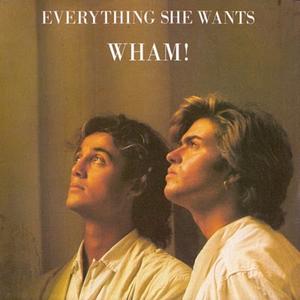 In April 1984, 40 of the singles on the Hot 100 were by British acts, and on the Hot 100 chart dated May 25, 1985 (the year of the height of the Second British Invasion), a record EIGHT of the Top 10 singles that week were by Brits: “Things Can Only Get Better” – Howard Jones (No. 10), “Some Like It Hot” – The Power Station (No. 9), “Suddenly” – Billy Ocean (of British origin; No. 8), “One Night In Bangkok” – Murray Head (No. 7), “Smooth Operator” – Sade (No. 5), “Everybody Wants To Rule The World” – Tears For Fears (No. 3), “Don’t You (Forget About Me)” – Simple Minds (No. 2), and “Everything She Wants” – Wham! (No. 1).
In April 1984, 40 of the singles on the Hot 100 were by British acts, and on the Hot 100 chart dated May 25, 1985 (the year of the height of the Second British Invasion), a record EIGHT of the Top 10 singles that week were by Brits: “Things Can Only Get Better” – Howard Jones (No. 10), “Some Like It Hot” – The Power Station (No. 9), “Suddenly” – Billy Ocean (of British origin; No. 8), “One Night In Bangkok” – Murray Head (No. 7), “Smooth Operator” – Sade (No. 5), “Everybody Wants To Rule The World” – Tears For Fears (No. 3), “Don’t You (Forget About Me)” – Simple Minds (No. 2), and “Everything She Wants” – Wham! (No. 1).
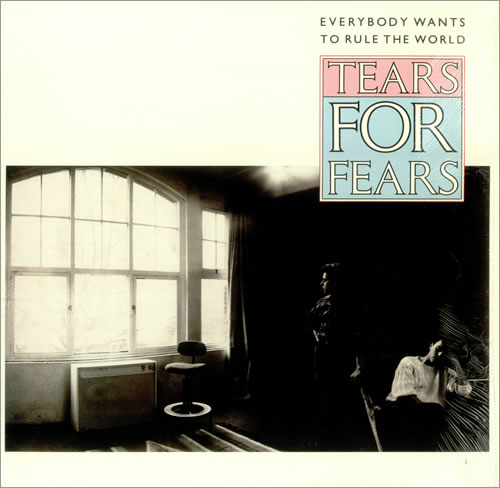
 Around the globe, it reached No. 1 in Canada and New Zealand, and the Top 10 in the U.K., Australia, Belgium, Holland and Ireland.
Around the globe, it reached No. 1 in Canada and New Zealand, and the Top 10 in the U.K., Australia, Belgium, Holland and Ireland.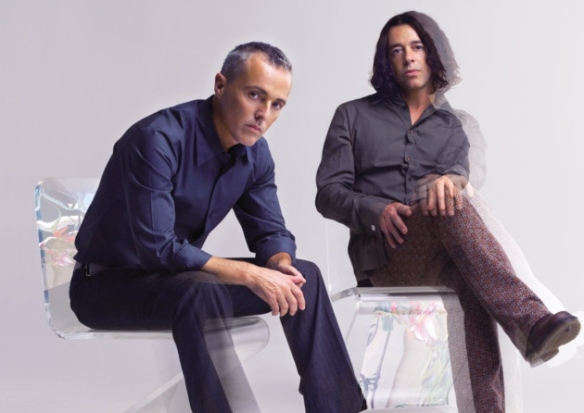
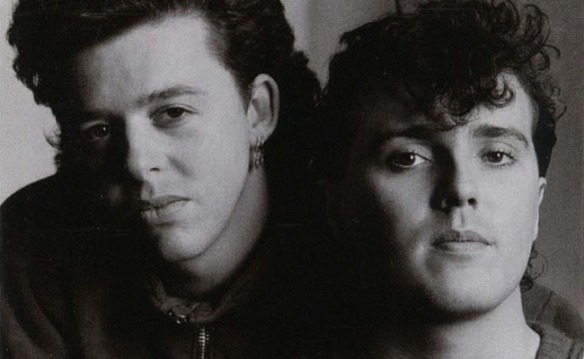
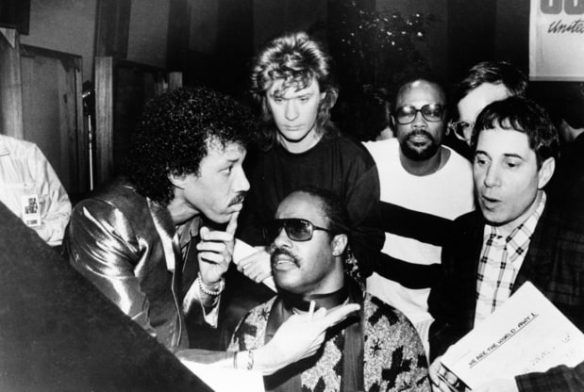
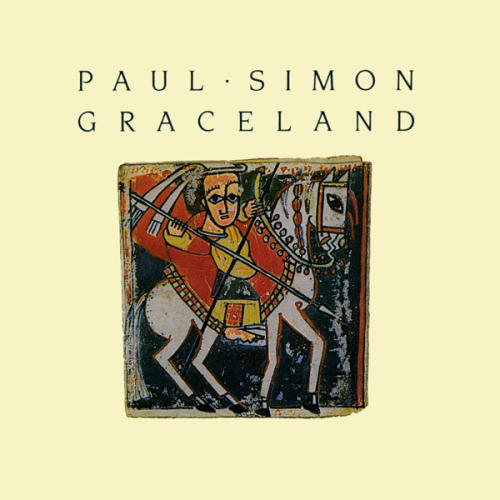
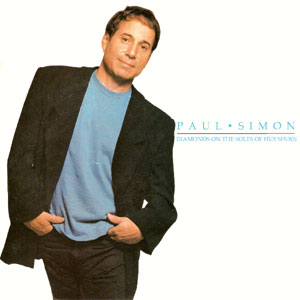



 The first Top 40 hit in the U.S. for Paul Young was the wonderful “Come Back And Stay,” from his debut album, NO PARLEZ.
The first Top 40 hit in the U.S. for Paul Young was the wonderful “Come Back And Stay,” from his debut album, NO PARLEZ.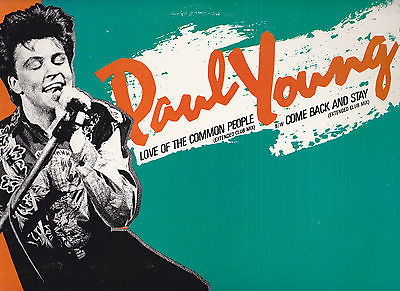 There was a 12” remix issued for “Come Back And Stay,” and I found my copy on the flip side of the 12” single for follow-up single (and another cover song), “Love Of The Common People.”
There was a 12” remix issued for “Come Back And Stay,” and I found my copy on the flip side of the 12” single for follow-up single (and another cover song), “Love Of The Common People.”
 In 1993, Paul Young formed a Tex-Mex band, Los Pacaminos, which released albums in 2002 and 2014, and still tour the world today.
In 1993, Paul Young formed a Tex-Mex band, Los Pacaminos, which released albums in 2002 and 2014, and still tour the world today.